뉴스&스피킹(영자신문)
하루 10분이면 영어에 대한 두려움을 극복하고 누구나 유창하게 영어를 구사하실 수 있습니다.
-
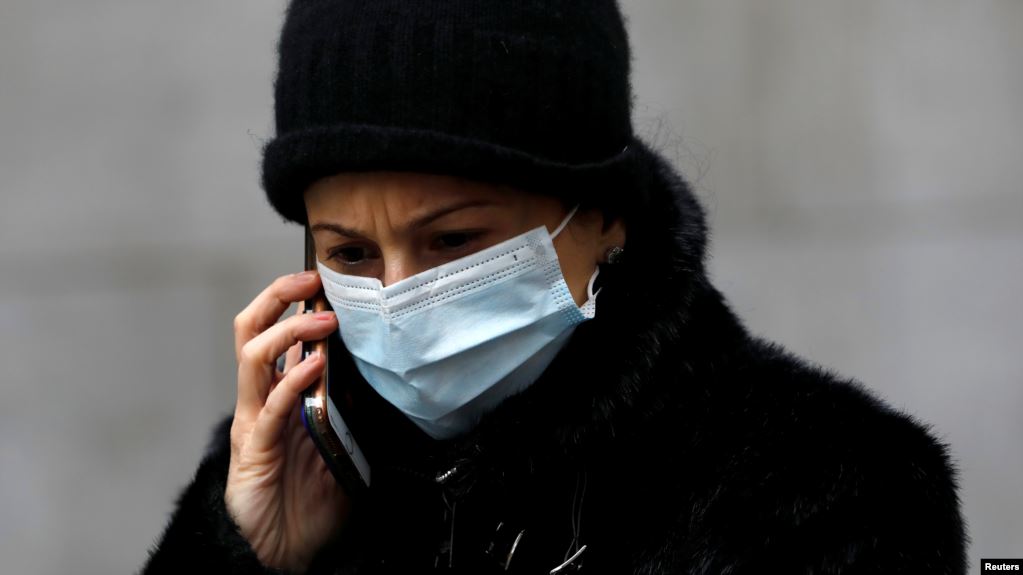 Mask or No Mask? Experts seem to agree: If you are not a health care worker, do not buy N95 masks, long considered the best of protective masks.
Mask or No Mask? Experts seem to agree: If you are not a health care worker, do not buy N95 masks, long considered the best of protective masks.
They will not help you much, and they are in extremely short supply for the people who need them most: health care workers trying to protect themselves from COVID-19 while saving lives.
However, there is still debate over whether everyone should wear some kind of face covering when they leave their homes.
Staying home and limiting contact with groups of people remain the best ways to stop the spread of the new coronavirus.
But some experts suggest that some kind of face covering may help, too -- not by protecting the wearer from infection, but by protecting others from the wearer.
There is growing evidence that people can spread the disease without having signs of sickness themselves. Two studies have linked 6 percent to 13 percent of infections to people who were not showing any signs of infections themselves.
The new coronavirus, which causes COVID-19, spreads mostly through small drops of liquid that infected people expel from their mouths. That happens when they cough or sneeze. But it can also happen when they talk or sing.
If virus-infected drops of liquid land on surfaces, people who touch the surface get the drops on their hands. From the hands, it is a short trip to the eyes, nose or mouth. Masks may help by blocking at least some of those droplets.
"I don't think it's going to be the most effective tool in our toolbox, but I think it might help," said Tim Schacker. He is vice dean for research at the University of Minnesota Medical School.
However, he added, "this is a tough question because like all things COVID, we lack data."
There is not much definitive research on how well face masks of any kind work to prevent any disease, and even less research for a new disease like COVID-19.
N95 masks generally are best for preventing someone from catching a virus. When used correctly, they fit closely onto the face and block more particles than most other masks.
However, many people do not use them correctly. They often do not get a tight enough fit, which largely defeats the purpose of the masks.
Dr. Chongfei Jin works at Patient First in the state of Virginia. He said there are many videos available online that show how to wear the mask the right way.
He said, “I just want to remind the public three things: Avoid inside out. Avoid upside down. And cover your nose as well.”
Health care workers are facing serious shortages in part because the panicked public has bought N95 masks for themselves.
"If they run out of masks, then it's very difficult for them to stay healthy to take care of you and me when we get sick," said Jon Andrus, a professor of global health at George Washington University in Washington, D.C.
Surgical masks are another popular choice. But experts say they provide limited protection from the coronavirus since they do not fit as closely to the face. They may help prevent the wearer from infecting others. But again, the masks should be saved for health care workers.
Some cloth masks may also help protect the public too. But it is not clear how much protection different kinds of fabric provide.
Some efforts have aimed to ask the public to sew fabric masks for health care workers facing extreme shortages. But, these homemade masks do not provide the usual level of protection.
One study from 2013 states, "A homemade mask should only be considered as a last resort to prevent droplet transmission from infected individuals." The researchers added, "But it would be better than no protection."
Jin, the Virginia doctor, said a “homemade mask, I believe that is the last resort. If you have a surgical mask, please use the surgical mask [as] that's much better.”
Andrus, the global health professor, is worried that masks will give wearers a false sense of security. Wearing a mask of any kind is no substitute for social distancing, he said.
But, "This is a war," he added. "Anything we can do to minimize risk is critically important."
I'm Ashley Thompson.
View -
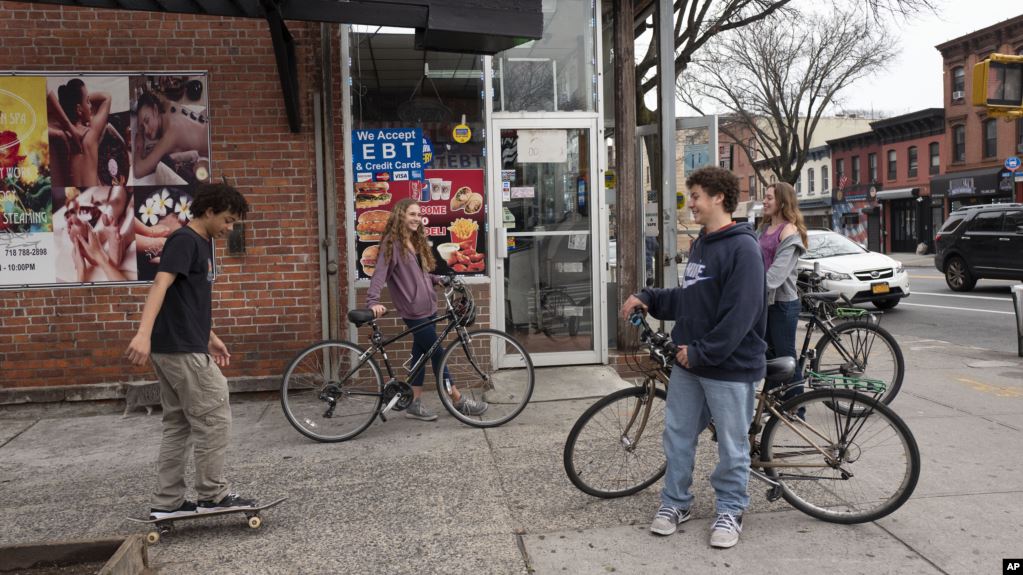 How Are the Children? Schooling During an Outbreak The United Nations Children's Fund, UNICEF, says school closings have affected the education of more than 80 percent of students worldwide.
How Are the Children? Schooling During an Outbreak The United Nations Children's Fund, UNICEF, says school closings have affected the education of more than 80 percent of students worldwide.
Robert Jenkins is the organization’s Global Chief of Education. He said, “Based on lessons learned with the school closures in response to Ebola, the longer children stay away from school, the less likely they are to ever return.”
Ebola is a highly infectious virus that has affected areas in Africa periodically over more than 40 years. The coronavirus crisis has spread to at least 175 countries affecting children around the world.
UNICEF says it is aiding 145 low- and middle-income countries with tools and money to help children continue their learning.
In the United States, most of the schools that closed their doors because of the COVID-19 outbreak said the closings would be temporary. But health officials warned that Americans may need to keep schools closed for many months.
Jon Pederson is dean of the University of South Carolina College of Education. He answered some questions about how this might affect the education of millions of children on the website The Conversation.
Will students learn anything while schools are closed?
Educators will have to find ways to help students want to learn. If a lesson plan does not excite students at school, then the lesson plan really will not work at home.
Teachers will have to be more creative and resourceful while classes are suspended. For example, in the U.S., they can take students on virtual classroom field trips to places like the National Aquarium in Baltimore. They can see everything from wild bears in Alaska to classical music concerts through the Virtual School Activities website. Students can learn how to carry out science experiments at Fun Learning for Kids. In addition, the New York Public Library has more than 300,000 books that students can download for free.
Students with special needs can use Educational Technology and Mobile Learning.
Will students have to repeat a grade or not graduate as expected?
We do not know how long this crisis will last. The federal government has permitted states to cancel required standardized tests for the school year.
States and schools will have to decide if students should move on to the next grade or graduate. Not sending students to the next grade or not graduating seniors would affect all public schools, colleges and universities. It would also affect families and the workforce.
When could lost time be made up?
There are measures that states and schools could take. For example, some schools could move to year-round schooling, extend their current or upcoming academic year, or lengthen school days and cancel some holidays.
In places like El Paso, Texas; Romeoville, Illinois; and Bardstown, Kentucky, some schools already operate all year or had longer school years after hurricanes, floods or other disasters.
Whatever school leaders decide to do, it is going to cost more money. And it is not clear how officials will be able to pay for the new measures.
What good news is there?
Pederson believes that states, schools and teachers have to deal with problems quickly. Their action has reduced the possibility that extreme measures will be needed and that the education system will not fall behind.
He noted the example of one of the teachers he works with. He said professor Gloria Boutte always starts meetings with a traditional Masai greeting: “How are the children?”
I’m Jonathan Evans.View -
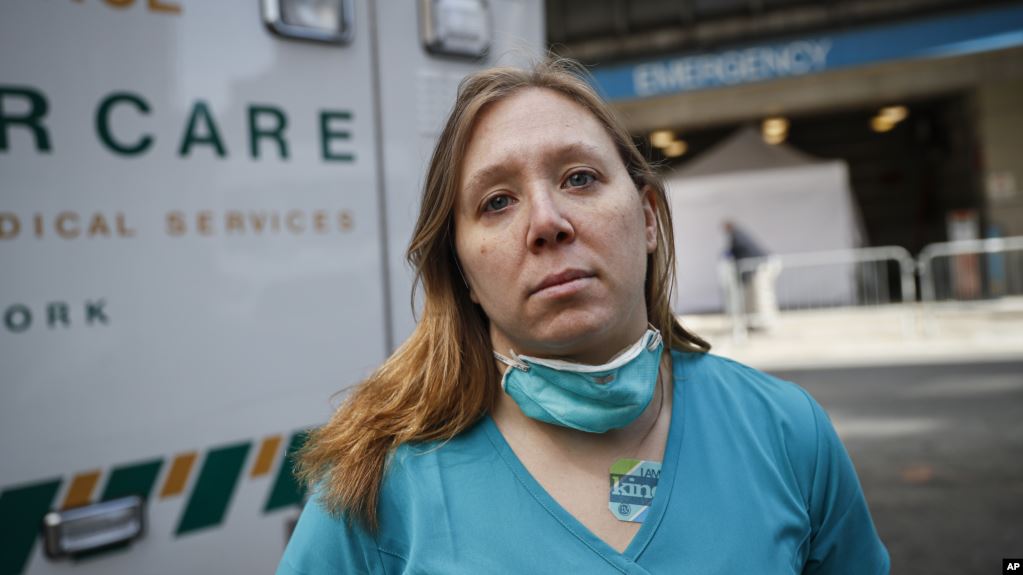 US Medical Workers Volunteer to Fight Coronavirus More than 82,000 people have volunteered for New York's reserve force of medical workers to help people infected with the new coronavirus.
US Medical Workers Volunteer to Fight Coronavirus More than 82,000 people have volunteered for New York's reserve force of medical workers to help people infected with the new coronavirus.
Health officials say the force includes recent retirees, health care workers who can take a break from their normal jobs and people between jobs.
Many of these volunteers have yet to be assigned to work in New York’s hospitals, and state officials must vet the volunteers and decide how to deploy them.
New York Governor Andrew Cuomo said this week he wants that situation to change. Hospitals expect to employ about 1,500 volunteers to assist a medical workforce that needs help, especially in the New York City area.
Health care workers from across the United States have started working in New York. Many found their new jobs through employment agencies. These workers discovered a hospital system in danger of being overwhelmed. There are simply too many patients.
Liz Schaffer is a nurse from Saint Paul, Minnesota. Tuesday was her first day working in the emergency room (ER) at Mount Sinai Hospital in Manhattan.
“I have never seen so many human beings in an ER at one time in my entire life,” she said.
Other states also are busy looking for and recruiting medical workers. At least 10 other states and the District of Columbia are preparing for waves of patients. The Army and the Department of Veterans Affairs also are in need of medical workers.
The work is dangerous
Several health care workers have died from COVID-19, the disease resulting from the virus. One of them was Kious Kelly, who worked in the emergency room at Mount Sinai West Hospital. He died on March 24 after becoming infected with the virus.
Many other medical workers have become very sick. Some hospitals are limiting the protective gloves and facial masks they give to workers because of the possibility of shortages.
Even with those risks, many people have volunteered.
“Whatever it is that they need, I’m willing to do,” said Jerry Kops, a licensed nurse from Long Island. He was working as a musician in the Blue Man Group before its North American performances were suspended.
“I keep thinking about my old co-workers and friends that are still in nursing. And to me, it’s like if they have to be there, I should be there too,” he said.
Hospital volunteers in New York will be paid. But that is not always the case in other areas. In Washington state, volunteer retirees who work in free medical clinics are not always paid for their work. But those who volunteer at hospitals will be paid.
Adding to the group of state recruits are workers suggested by employment agencies.
Nurses are being offered wages of up to $100 an hour. The pay includes food and a place to live. The agencies are seeking to fill over 5,000 jobs in hospital intensive care units and emergency rooms, said Michael Fazio. He works for a company called Prime Staffing, which has recruited over 250 workers to New York hospitals in recent weeks.
“It shocks me more and more the calls I’m getting. West Coast nurses are calling me, wanting to help,” Fazio said. “They’re leaving their families, wanting to help. They don’t have the fear of COVID-19. Their driving force is saying: ‘I’m coming to help fight this, help New York City.’”
One of those nurses is Katherine Ramos of Cape Coral, Florida. She said her work at New York Presbyterian Hospital made her feel very tired.
Ramos has been staying in an apartment building with her husband and two children — and takes measures to prevent the virus from spreading to her family. But she plans on moving soon to a hotel so if she catches the virus, they will not be infected.
“I want to be able to protect my family more,” she said.
New York officials say the state will need tens of thousands of additional medical workers to deploy quickly before of an expected wave of patients in the next three weeks.
‘Got to play our part’
Temporary hospitals are being built in convention centers, sports centers and at colleges, but without trained workers they cannot help anyone.
John Gallagher is a doctor from Pennsylvania. He volunteered to work at hospitals near his home at the Ohio border a few months after retiring at age 65. He said the danger of becoming infected with the virus himself and spreading it to loved ones left him very fearful.
“But,” he added, “it’s one of those things. If it’s needed, then we’ve got to play our part.”
I’m Mario Ritter Jr.View -
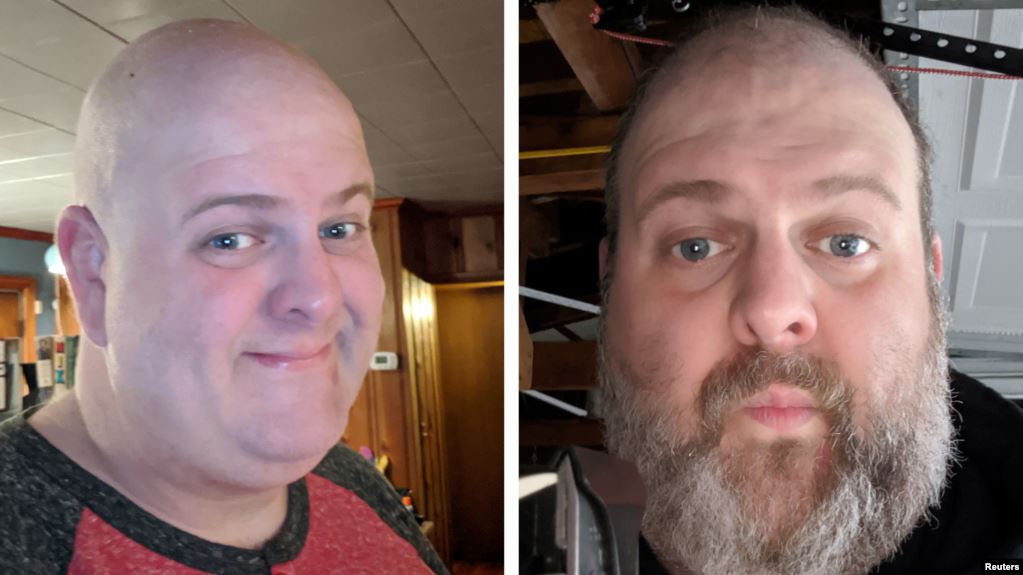 Americans Trying New Looks, Staying Mostly Out of Sight Jacob Kunthara’s wife and three adult children had never seen him without the mustache he wore for 45 years. But the spread of COVID-19 and the restrictions it brought to public life led to a change of face for Kunthara.
Americans Trying New Looks, Staying Mostly Out of Sight Jacob Kunthara’s wife and three adult children had never seen him without the mustache he wore for 45 years. But the spread of COVID-19 and the restrictions it brought to public life led to a change of face for Kunthara.
The family lives in Gilbert, Arizona, a town under a stay-at-home order. On a recent day at home, Kunthara secretly cut off all the hair on his face and covered his face with a cloth. Then, at dinner, he tore off the cloth, surprising his wife and children with his new hair-free face.
Fiona Riebeling of New Haven, Connecticut, took similar action to create a new look for herself, but worked with some unusual tools.
Riebeling watched a YouTube video on how to cut hair. After, she realized she had no haircutting equipment. So, she searched her home for substitutes. In the end, cooking tools, including a fork and skewers, helped her go from long hair to short.
Across the United States, the COVID-19 “stay at home” order has moved many people to experiment with their hair. Online, the movement is called corona cuts or quarantine cuts.
The experimenters know they have several weeks at least before they will be seen in public. That is enough time for most to regrow a haircut that goes wrong.
“This is the most radical thing I’ve done ever,” said Kunthara, a 62-year-old civil engineer. He acted just one week into the stay-at-home order.
He said, “I thought, ‘Maybe this is the best time to try something. I’m home, we cannot go anywhere.’”
Riebeling expressed the same idea. “Being in quarantine takes off a lot of the pressure that you normally might feel going out in public and worrying about your appearance,” she said.
Reibeling cut her hair while on a video call with two friends also trapped in their homes.
“We’re limited right now in our movement and what we can do," Riebeling said. She noted that such restrictions can cause fear.
“To find places where you can feel empowered and make decisions about yourself, your body, how you choose to be in the world is a great way of reminding yourself that you are in control of as much as you can be,” Riebeling said.
Ed Maudlin is a call center employee now restricted to working at home in Indianapolis, Indiana.
Maudlin said he looked at his full, 30-year-old beard and thought, “I wonder what I look like under there?”
He told the Reuters news agency his office did not plan on reopening for at least a month. That meant it would be only his girlfriend who would see him in person for a while.
So Maudlin went for extreme change. He removed all the hair from his head and face for a very smooth look.
“I decided to go with the full all-over - nobody will know,” said Maudlin. He expects his face and head hair will grow back by the time he is in the office.
“I figure I will come out of this looking like maybe I need a bit of a haircut rather than looking like Tom Hanks on the island,” said Maudlin. He was speaking of the 2000 film Cast Away, in which Hanks stars as a man trapped for years alone on an island with no connection to humanity.
I’m Jill Robbins.View -
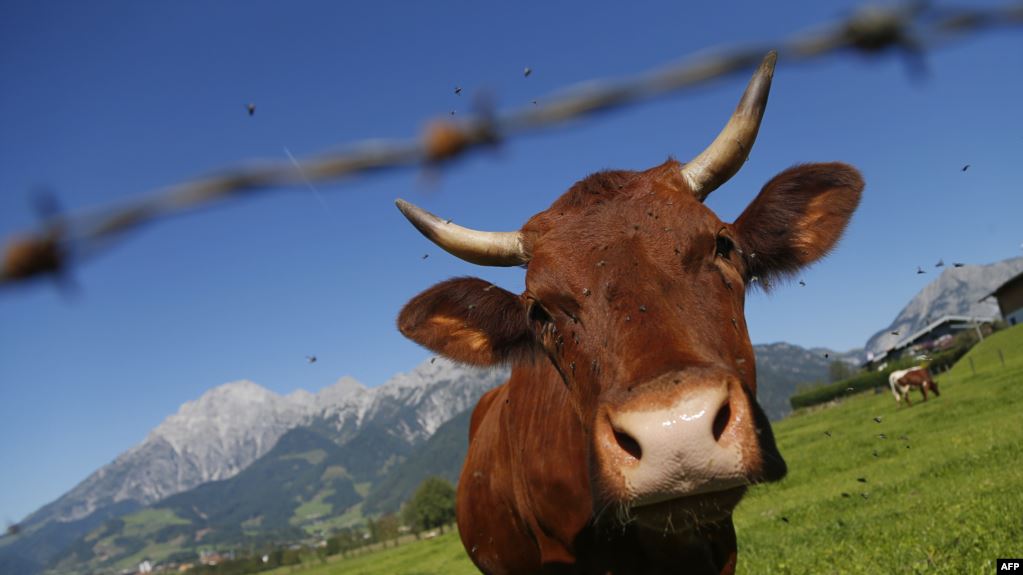 We Can Thank Cows for ‘Vaccine’ And now, Words and Their Stories, from VOA Learning English.
We Can Thank Cows for ‘Vaccine’ And now, Words and Their Stories, from VOA Learning English.
The spread of dangerous diseases around the world is not new.
As trade and colonization expanded worldwide over hundreds of years, so did some dangerous diseases. And smallpox was one of the worst of them.
Happily, smallpox has been eradicated, meaning it does not exist in nature anymore. The story of how smallpox was defeated is closely linked to the English word, “vaccine.”
However, before modern science made that happen, humans had suffered from the disease for a very long time. Researchers even found a 3,000 year old Egyptian mummy with smallpox scars.
Smallpox was a severe and deadly disease. The Centers for Disease Control and Prevention describes smallpox as devastating. “On average, three out of every 10 people who got it died. Those who survived were usually left with scars, which were sometimes severe.”
By the 18th century, smallpox was still infecting and killing people around the world. But in England, there were some interesting stories going around about milkmaids.
Milkmaids were women who milked cows. They were known to get a mild disease called cowpox. And the scientific term for cowpox is at the heart of our story about the English word, “vaccine.”
Cowpox is a disease that affects cows but can spread to humans through a scratch or cut. Cowpox would often cause a few sores, but it is not serious. Smallpox, however, can leave terrible scars at the very least and cause death at the very worst. But milkmaids did not seem to get the damaging disease.
A British doctor named Edward Jenner (1749-1823) wanted to find out if the stories were true. So, he did an experiment on his gardener’s son, nine-year-old James Phipps. Jenner took material from a milkmaid’s cowpox sore and injected it into the child.
The nine year old, predictably, got cowpox. But, months later when Jenner exposed Phipps to smallpox, the child never became infected.
Jenner performed this experiment on more people before publishing his findings, calling them: “An Inquiry into the Causes and Effects of Variolae Vaccinae.”
The Latin term “variolae vaccinae” means something like ‘pustules from a cow.’ A pustule is a small bump on the skin that contains or produces infected fluid or pus.
And, let’s face it, pustule – whether in Latin or not – is a bit gross. So, it is the word “vaccine,” based on the Latin word for cow – vaca – that stuck.
In time, vaccines became known as the substances that give immunity from other diseases as well.
And that is the story of the English word, vaccine …
… which brings us to the end this Words and Their Stories.
Until next time … I’m Anna Matteo.
Historical events related to smallpox from the Centers for Disease Control and Prevention
6th Century – Increased trade with China and Korea introduces smallpox into Japan.
7th Century – Arab expansion spreads smallpox into northern Africa, Spain, and Portugal.
11th Century – Crusades further spread smallpox in Europe.
15th Century – Portuguese occupation introduces smallpox into part of western Africa.
16th Century – European colonization and the African slave trade import smallpox into the Caribbean and Central and South America.
17th Century – European colonization imports smallpox into North America.
18th Century – Exploration by Great Britain introduces smallpox into Australia.View

